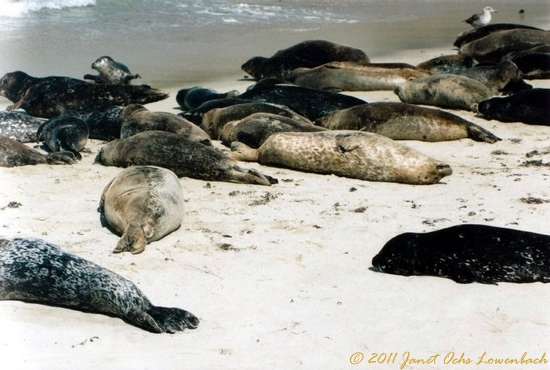This post is written by Guest Contributor, Janet Ochs Lowenbach. If you are also interested in writing a guest blog, please reach out using the form in the Contact page.
If you want to take strong outdoor photos, consider these very basic principles. Anything you see, you can photograph. If you see a reflection of trees in a pond or sun on the water, a pink sky, even a rainbow, the camera can capture it. But you have to play around to get a good shot. Do you focus on the trees that make the reflection? Or on the surface of the water? Do you meter for the trees or the river? The answer is to experiment. With the digital camera you have endless numbers of pictures available for free, and you have a screen to evaluate your attempts. So test out your composition, metering, and focusing.
Also make sure you vary your camera angles. Don’t just shoot straight on. Lie on the ground, and shoot up. Stand up and shoot down. Shoot past a wall. Shoot over a foreground object. Shoot under an object (a branch) shoot though something that leaves a hole in the middle - (this is called a frame within a frame). These approaches will differentiate your work from that of others. They will add depth and drama to your photos.
There is a formula I use to make sure I remember to vary my shots: up, down, over, under, past, and through. Also shoot wide and far away, then shoot close to gain a microcosm of your world.
The picture below captures the beauty of the reflections, and the building is off to the left, consistent with the rule of thirds.
What is the Rule of Thirds? Place the subject one third up, down, or sideways from the edge of the picture - rather than in the center of the shot. To understand the concept, draw an imaginary tic-tac-toe board over your viewfinder. Place the subject either on one of the lines or at the intersections of the lines. Don’t center it.
Compare this photo with the first picture. It lacks the movement of the vegetation on the water, and the subject is in the middle, rather than in one of the third spaces, making the picture staid and motionless.
Include objects in your photos, person, a car, and animal to add drama, depth, and perspective.
In the next picture, the reflection becomes dominant and the figures to the right add scale.
Lines, patterns, and shapes are the tools of the photographer. This picture is more dramatic than the others because of the drama of the trees whose lines pull the eye of the viewer into and through the picture. In fact, the vegetation to the bottom and the tree on the right and left almost surround the water.
Try to be different. Remember, don’t shoot straight on. Shoot up, down, over, under, by and through. This next picture is strong; it is a very different way of viewing the waterscape. With its leafy foreground, it adds depth and drama to the scene. It also tells a story; the red leaves say that fall is coming.
For me, photography was always about the story and the message hidden in the picture and that is what I try to look into the photograph.
Happy Shooting!














